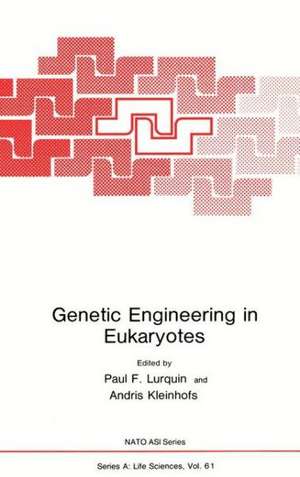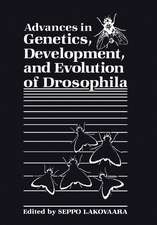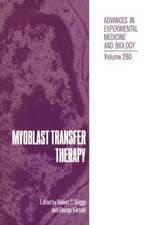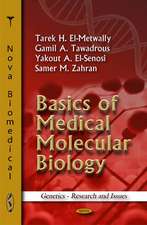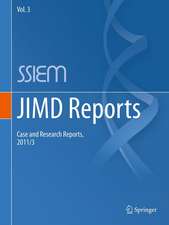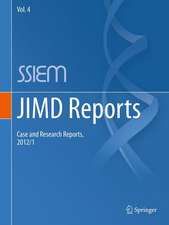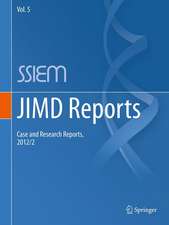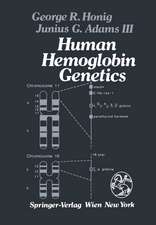Genetic Engineering in Eukaryotes: NATO Science Series A:, cartea 61
Editat de Paul F. Lurquinen Limba Engleză Paperback – 12 dec 2012
Din seria NATO Science Series A:
- 15%
 Preț: 656.58 lei
Preț: 656.58 lei - 15%
 Preț: 655.13 lei
Preț: 655.13 lei - 15%
 Preț: 678.35 lei
Preț: 678.35 lei -
 Preț: 397.38 lei
Preț: 397.38 lei - 5%
 Preț: 377.87 lei
Preț: 377.87 lei -
 Preț: 397.76 lei
Preț: 397.76 lei - 18%
 Preț: 1232.41 lei
Preț: 1232.41 lei - 5%
 Preț: 731.64 lei
Preț: 731.64 lei -
 Preț: 413.15 lei
Preț: 413.15 lei - 15%
 Preț: 649.22 lei
Preț: 649.22 lei - 5%
 Preț: 369.45 lei
Preț: 369.45 lei -
 Preț: 407.56 lei
Preț: 407.56 lei - 5%
 Preț: 2162.19 lei
Preț: 2162.19 lei -
 Preț: 407.39 lei
Preț: 407.39 lei -
 Preț: 396.40 lei
Preț: 396.40 lei - 15%
 Preț: 663.93 lei
Preț: 663.93 lei -
 Preț: 387.38 lei
Preț: 387.38 lei -
 Preț: 393.13 lei
Preț: 393.13 lei -
 Preț: 398.35 lei
Preț: 398.35 lei -
 Preț: 401.24 lei
Preț: 401.24 lei - 15%
 Preț: 678.81 lei
Preț: 678.81 lei -
 Preț: 395.09 lei
Preț: 395.09 lei - 18%
 Preț: 952.40 lei
Preț: 952.40 lei - 15%
 Preț: 654.43 lei
Preț: 654.43 lei -
 Preț: 402.00 lei
Preț: 402.00 lei -
 Preț: 401.24 lei
Preț: 401.24 lei - 15%
 Preț: 655.27 lei
Preț: 655.27 lei -
 Preț: 394.71 lei
Preț: 394.71 lei -
 Preț: 384.48 lei
Preț: 384.48 lei - 5%
 Preț: 395.61 lei
Preț: 395.61 lei - 5%
 Preț: 1421.57 lei
Preț: 1421.57 lei - 15%
 Preț: 651.34 lei
Preț: 651.34 lei -
 Preț: 400.10 lei
Preț: 400.10 lei -
 Preț: 386.99 lei
Preț: 386.99 lei - 5%
 Preț: 386.11 lei
Preț: 386.11 lei -
 Preț: 403.91 lei
Preț: 403.91 lei - 15%
 Preț: 651.51 lei
Preț: 651.51 lei -
 Preț: 393.90 lei
Preț: 393.90 lei - 5%
 Preț: 376.43 lei
Preț: 376.43 lei -
 Preț: 400.26 lei
Preț: 400.26 lei - 5%
 Preț: 388.84 lei
Preț: 388.84 lei -
 Preț: 400.65 lei
Preț: 400.65 lei - 5%
 Preț: 740.58 lei
Preț: 740.58 lei - 18%
 Preț: 1225.16 lei
Preț: 1225.16 lei - 5%
 Preț: 386.46 lei
Preț: 386.46 lei -
 Preț: 421.82 lei
Preț: 421.82 lei
Preț: 718.10 lei
Preț vechi: 755.88 lei
-5% Nou
Puncte Express: 1077
Preț estimativ în valută:
137.40€ • 143.48$ • 113.47£
137.40€ • 143.48$ • 113.47£
Carte tipărită la comandă
Livrare economică 15-29 aprilie
Preluare comenzi: 021 569.72.76
Specificații
ISBN-13: 9781468444957
ISBN-10: 1468444956
Pagini: 296
Ilustrații: IX, 282 p. 28 illus.
Greutate: 0.48 kg
Ediția:Softcover reprint of the original 1st ed. 1983
Editura: Springer Us
Colecția Springer
Seria NATO Science Series A:
Locul publicării:New York, NY, United States
ISBN-10: 1468444956
Pagini: 296
Ilustrații: IX, 282 p. 28 illus.
Greutate: 0.48 kg
Ediția:Softcover reprint of the original 1st ed. 1983
Editura: Springer Us
Colecția Springer
Seria NATO Science Series A:
Locul publicării:New York, NY, United States
Public țintă
ResearchCuprins
Transformation in Fungi.- Gene Organization and Regulation in Neurospora crassa. Evidence from the Cloning and Transformation of the qa Gene Cluster.- Use of Transformation and Meiotic Gene Conversion to Construct a Yeast Strain Containing a Deletion in the Alcohol Dehydrogenase I Gene.- Transformation and Storage of Competent Yeast Cells.- DNA Transfer into Animal Cells.- The Dominant Selective Marker APH 3? and the Study of the Expression of the Cotransfected Gene.- Close Linkage of Transferred Galactokinase and Thymidine Kinase Genes in a Transformant after DNA-Mediated Gene Transfer.- Transfer of DNA into Higher Eukaryotic Cells Using Recombinant Vectors Based on Simian Virus 40 and Chloramphenicol Acetyltransferase Genes.- Construction and Transfer into Mammalian Cells of a Vector Containing Insect Histone Genes.- An Insect Virus for Genetic Engineering: Developing Baculovirus Polyhedrin Substitution Vectors.- Genetic Engineering of Plant Cells: A Rapid Overview.- Bacterial-Plant Gene Cloning Shuttle Vectors for Genetic Modification of Plants.- Construction of Cloning Vectors from the IncW Plasmid pSa and Their Use in Analysis of Crown Gall Tumor Formation.- Construction of Recombinant Ti Plasmids Containing the chlM Gene from E. coli.- Reversal of Plant Tumor Formation.- Regeneration of Plants from Crown Gall Cells. A Step in the T-DNA Mediated Genetic Engineering of Plants.- The Potential Uses of Agrobacterium rhizogenes in the Genetic Engineering of Higher Plants: Nature Got There First.- Viroids and Genetic Engineering.- Liposomes as a Tool for Introducing Biologically Active Viral Nucleic Acids into Plant Protoplasts.- Plant Genetic Manipulations: Applications from Plant Somatic Cell Genetics.- Selection of Tobacco Protoplast-Derived Cells for Resistance toAmino Acids and Regeneration of Resistant Plants.- Nitrate Reductase Genes as Selectable Markers for Plant Cell Transformation.- Regeneration of Plants from Single Cells of Cereals and Grasses.- Auxotroph Complementation via Protoplast Fusion in Hyoscyamus muticus and Nicotiana tabacum.- Approaches to Plant Protoplast Transformation Using Drug Resistance and Auxotroph Complementation as Selective Markers.- Contributors.
